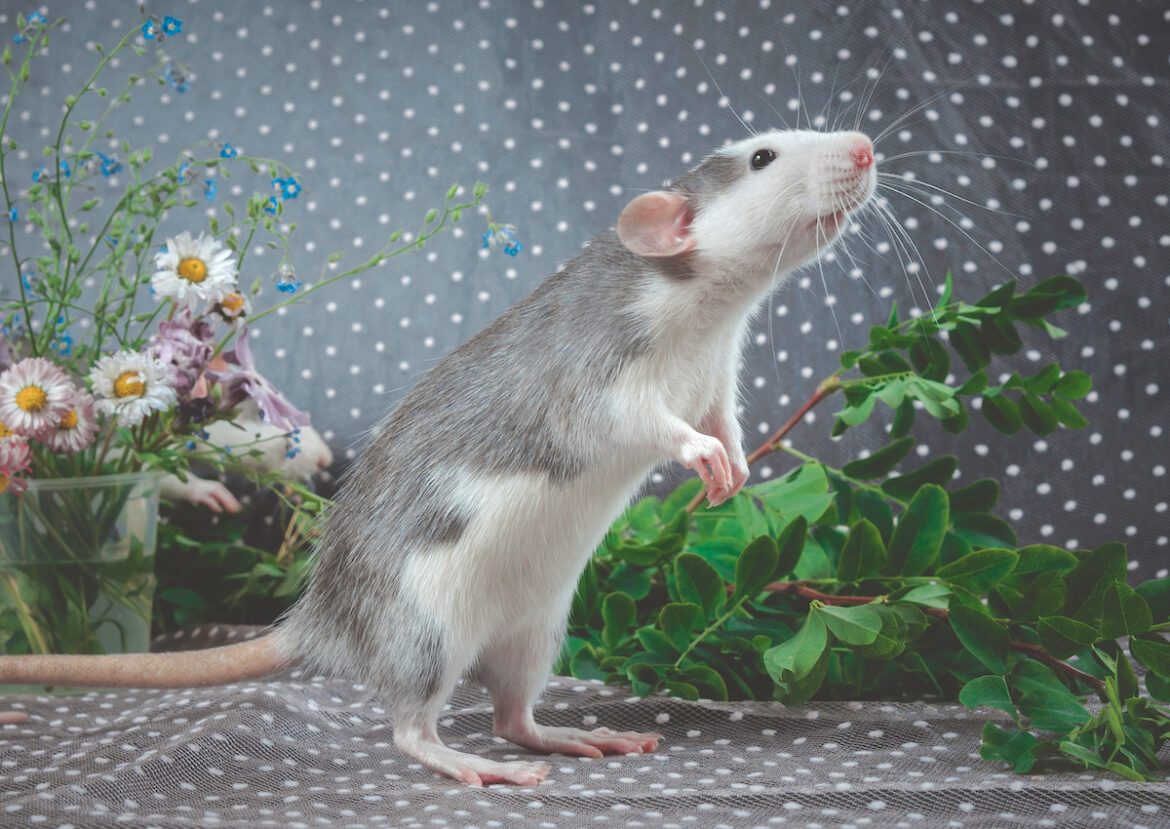Animal lovers across the world like to adopt exotic creatures such as the toucan or husky rat. While it is true that these animals aren’t exactly popular domestic pets, it would be a completely false and generalized statement to claim that they don’t make great pets. Exotic pets are just as precious to their pet guardians as any feline or dog.
Speaking of husky rats, many animal lovers looking to adopt (and those who are already the proud parents of a husky rat or two) are always searching for as much information as they can gather about these pets. The more knowledge they have about their pet, the better off both pet and parent will be.
But what is a husky rat? The husky rat, also known as a Roan rat, is a domestic fancy rat that has been bred for a grey and white fur pattern that closely resembles that of the husky dog. They make fun, social, intelligent, and active pets.
So, without further ado, let’s get into the matter of husky rats and everything that you need to know about these tiny but mighty creatures.
What Is A Husky Rat?
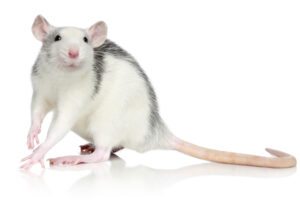
The husky rat, also known as the Roan rat, is easily distinguishable due to its coloration and markings similar to those of a husky dog. Hence, the name. The husky rat does not belong to a distinct breed.
They are much like their cousins, the dumbo rat or the white rat – belonging to the same breed as any other fancy rat. These rats fall into the category of Rattus Norvegicus.
When it comes to the origins of the husky rat, it is impossible to be certain where exactly they came from. But many animal experts seem to believe that they come from Eastern Europe or Russia.
When the husky rat is born, it is one solid color. But, as these creatures grow older, the ‘roaning’ takes place, giving them the white hair intermingled with the grey colored hair and the white hair patch at the top of their head and face.
The roaning is a process that starts when the husky rats are 4-6 weeks of age, and the process of roaning doesn’t seem to stop until these mammals are well into their adulthood. Some animal anatomy and behavioral research concludes that roaning occurs due to a recessive gene that transforms the husky rat to resemble a husky.
How Long Do Husky Rats Live?
As mentioned earlier, the husky may look unique, but it is not much different from the fancy rat. The husky lives the average lifespan of a fancy rat. Pet rats are fully mature in 4-6 months. Male rats take longer to mature than females. A male pet rat can reach sexual maturity when it is 10-12 weeks of age.
On the other hand, the females mature faster, and a female rat goes into heat when it is merely 8-9 weeks of age. When it comes to the life cycle of a husky rat, you may be able to extend the life of a fancy rat when in captivity. However, most pet rats will live 3-7 years.
It is only possible to extend the lifespan of your pet rat when you make 100% sure that it is receiving the best diet, utmost attention and upkeep, and superior medical care. Also, strangely enough, the stronger the husky rat bonds with you, the longer it is likely to live. According to The Guinness Book Of World Records, the oldest domestic rat was Rodney, who lived for 7 years and 4 months.
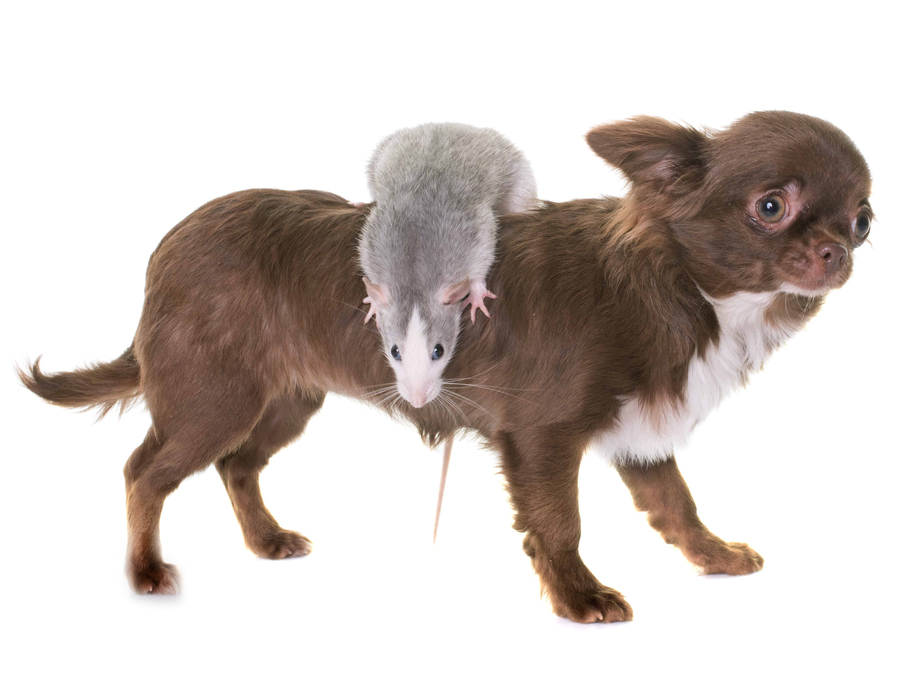
How Big Do Husky Rats Get?
The husky rat is often termed as the roan rat by American rat breeders. Roans are, on average, 16-20 inches from the tip of the nose to the tip of the tail. Male roans are generally longer and larger than the females.
The male roan, on average, weighs from 450-650 grams. And, the female husky rat weighs around 350-450 grams.
Now, many rat guardians love to see their fur babies put on a hefty amount of weight, but it is not good to allow your pet to gain too much weight.
Just like any mammal, rats are prone to obesity. Overfeeding your rat means that you’ve just managed to lessen your pet’s life rather than increase it.
What Kind Of Pets Do Husky Rats Make?
Husky rats are intelligent, active, and playful pets. These fur babies are quite loyal too. Many pet parents of husky rats note that their pets can not only recognize their owners but also take great pleasure in following their humans around, like a dog. Not to mention, rats love to explore new environments. They are naturally curious, which means that your pet is going to try and get into small corners and crevices in your home.
Furthermore, rats are highly sociable animals, so many vets recommend keeping more than one rat in a cage unless your pet has some severe behavioral problems. The earlier your pet is exposed to the company of other rats and humans, the friendlier it is likely to become.
The only time that pet rats are seen to have trouble in their cage is when a dominant alpha has not been established. But, once your rats get over this minor hurdle, you’ll find that your pets get along quite well. Rats have even been known to take care of other sick cage mates. And rats are pack animals, so you’ll often find that pet parents keep more than two rats in a cage to make a pack.
How To Care For Your Rat
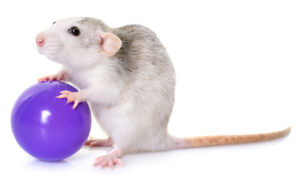
When you buy or adopt a pet, it becomes your responsibility to nurture and care for those pets. You need to ensure that your husky rats don’t get into any trouble and have plenty of playtime with you, as well as plenty of toys and climbing obstacles to keep their bodies and minds stimulated.
Making use of food and treats to stimulate pet rats is also an ingenious way to keep your rat happy. You see, in the wild, rats scavenge for their food.
So, using paper cups or toilet paper tubes to hide the food away so that your pet will have to search for its food is an excellent way to keep your little friend busy and entertained. Interactive toys where your pet has to solve a simple puzzle to get to its meal are another technique to provide your pet with mental stimulation.
The best way to bond with your husky rats is to allow them cage-free time with proper supervision. You see, your rat will inevitably chew on items such as electrical cords if you are busy doing other things while your husky rat is out of its cage.
Moreover, rats can be provided with play wheels (this one’s my favorite) for their cages to exert any extra energy and keep in shape. However, playing with toys or wheels in their cage is no substitute for the time that you share with them.
Additionally, it would help if you also kept in mind that rats have teeth that grow perpetually. Therefore, providing chew toys is a must for pet rats. If your rats do not have any objects to grind their teeth with, you may be sure that your husky rat will experience dental problems such as malocclusion.
What Do Husky Rats Eat?
Pet rats are mostly all the same when it comes to food. There are the foods they love to eat, and then there’s the diet they need to stick in order to stay healthy. Although pet rats are omnivores, each pet will have its likes and dislikes. But, for the well-being of your pet rat, you’ll need to provide them with a combination of foods consisting of fruits, vegetables, and meats.
Husky rats are at their healthiest when they keep to a 60% vegetarian diet and 40% rat pellets. When you look for rat pellets or rat cube food, make sure that the pellets have 16% protein content and 4-5 % fat content.
Fruits And Vegetables Rats Can Eat:
- Apples
- Bananas
- Pears
- Berries without pits
- melons
- Broccoli
- Carrots
- Peas
- Cabbage
- Endives
Cooked Foods Rats Can Eat:
- Beans
- Corn
- Sweet potato
- Red cabbage
- Meat – fish, chicken, or red meat
- Eggs
Treats Rats Can Eat Occasionally:
- Seeds
- Grains
- Low sugar cereals
- Cooked pasta
- Cooked rice
- Mealworms
These foods should only be given to pet rats as treats. They are not toxic for your pet in any way but are high in sugar and carbohydrates. And rats are prone to obesity, so it’s best to take care not to overfeed your pet with such foods. Now, rats are highly motivated by food treats, so if you are trying helplessly to train your pet to learn a trick, make use of these food items.
Foods That Are Toxic For Rats:
- Caffeine
- Chocolate
- Salty foods
- Processed human foods
- Raw beans
- Uncooked sweet potato
- Garlic
- Onions
- Avocado pits, rinds, skins, or leaves
And, one of the most crucial things to provide your pet rat for a healthy and long life is the constant supply of fresh, clean drinking water. Never forget to place a water bottle in your rat’s cage and keep it clean and topped up. It is necessary to wash and refill the water bottle every day. It would be best if you also kept an eye out for leakages, as that may cause a massive mess in your pet’s cage and an environment perfect for bad bacteria to fester.
What Type Of Cage Does My Pet Rat Need?
It is vital to differentiate between a hamster and a husky rat. Rats are bigger and much more active than hamsters. So, it would be best if you got a cage that is larger and taller with platforms to climb to. The cage needs to be at least 90cm long, 60cm deep, and 150cm tall. And, the more rats you house in one cage, the bigger your pet’s cage needs to be.
Another aspect to keep in mind is that you can’t have a glass tank for rats. The ventilation in these glass tanks is not enough for rats. Inadequate ventilation can cause a variety of health concerns for your pets, and for you. It would be best if you went for a wired cage that has a solid floor. Also, there should be a solid tray underneath to keep your rat from getting stuck or injuring itself.
Furthermore, it would help if you used litter for the cage floor to absorb ammonia from urine and droppings. Moreover, there should always be dust-free bedding to prevent any respiratory problems.
Additionally, rats need a rest box where they can relax and unwind. You can provide a DIY nest box or buy one from the pet store. And, if you add a hammock to the cage as well as a wheel, your fur baby will surely appreciate the kind gesture.
You should never place the cage in direct sunlight or even close to it in hot weather. And, it would be best if you also took care not to put the rat’s cage anywhere close to a draft in cold weather. Moreover, it would help if you tried to litter train your rats. That is the easiest way to keep your buddy’s cage cleaner.
How Much Does It Cost To Get A Husky Rat?
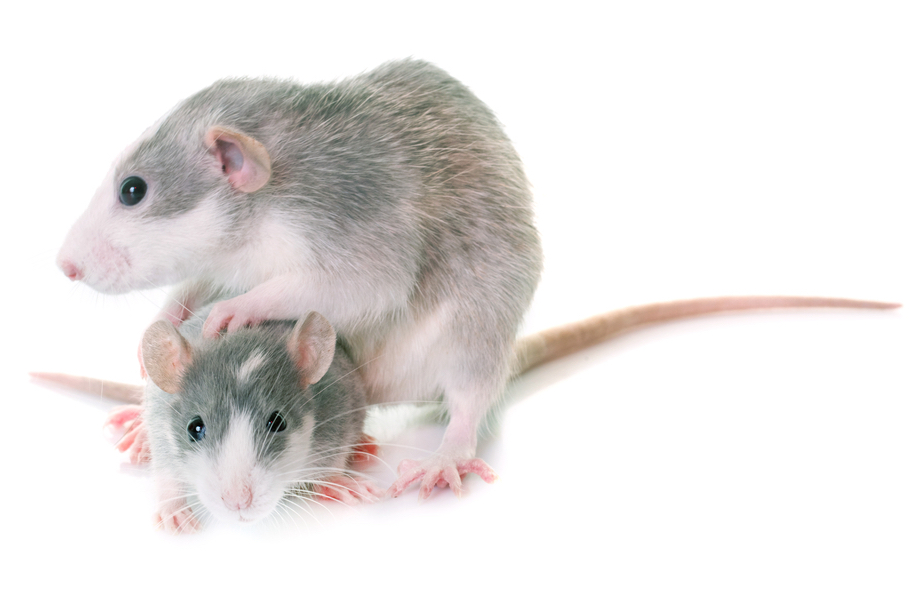
Husky rats are pretty standard as domestic pets in Europe. You may have some trouble finding these extraordinary creatures elsewhere, such as in the US.
But, there are sites that you can check out to get ahold of a husky rat. However, you must get your pet rat from reliable breeders or websites to ensure they are handing over a healthy pet to you.
Now, a husky rat can cost around $40-60. Not bad for such a wonderful little companion! If you go for a pair of same-sex rats, you might get a better deal.
But, when you acquire a pet, you also need to keep in mind that there are other costs that you will incur, such as a cage, play toys, rat pellets, nest box, litter tray, and the recurring cost of food, bedding, and medical check-ups.
What Health Problems Are Pet Rats Susceptible To?
A vast majority of pet rats suffer from infectious respiratory diseases. These may spread from one rat to another. Humans and other animals do not get infected with a rat’s respiratory illnesses. But, you have to be careful that if one rat is suffering from a respiratory issue, you keep it separate from the pack until it recovers.
Furthermore, a red discharge around the eyes and nose is another recurring problem found in husky rats. You may be sure that the discharge has no element of blood in it; it’s just mucus. All you need to do is to keep cleaning around your pet’s eyes and nose daily.
Unfortunately, husky rats can develop tumors too. It is a problem that is more frequently found in female rats than male rats. However, many health issues in rats can be countered with a proper, nutritious diet, clean and hygienic habitat, and regular exercise. Also, frequent visits to the vet may be helpful in the prevention of diseases.
Conclusion
Pet rats are just as amazing as a pet cat or dog. The added advantage of pet rats is that they are low-maintenance and far less expensive to keep and care for. You have to make sure that when you buy or adopt a husky rat, you make your pet’s life as fulfilling as it will undoubtedly make yours.
And, it’s always a good idea to consult with a vet and do some research about any pet that you would like to keep as your newest family member.
Up Next: Can Rats Eat Dog Food?
